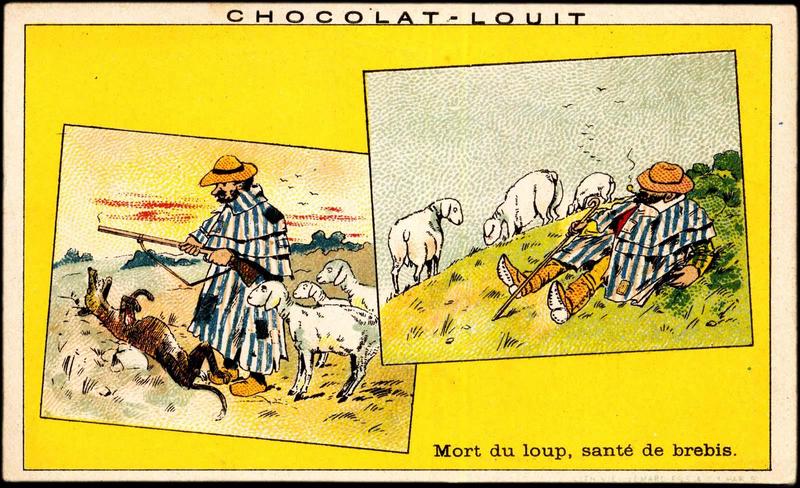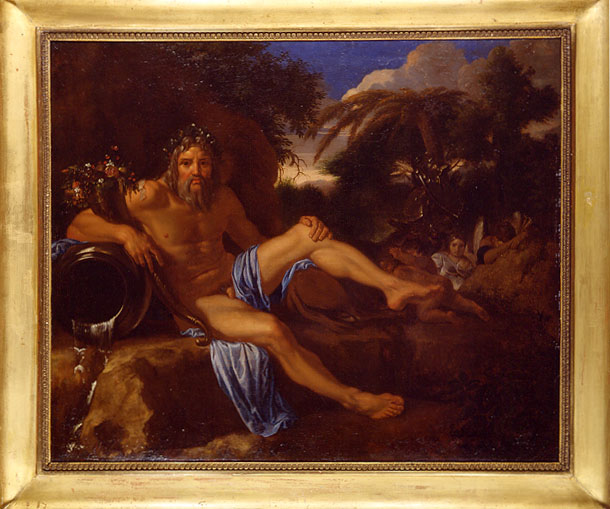Environ 480 résultats pour « Loup »
-
Loup
Le Loup gris (Canis lupus) est l'espèce de canidés la plus répandue. Également nommée Loup commun ou Loup vulgaire, l’appellation courante est loup, bien qu'elle soit partagée par plusieurs canidés. L'espèce a évolué au cours de l'histoire pour se différencier en plusieurs sous-espèces comme le Loup gris commun d'Europe (Canis lupus lupus), le Loup arctique (Canis lupus arctos) et de nombreuses autres sous-espèces de loups. Il est également à l'origine du Chien (Canis lupus familiaris) par sa domestication par l'homme et des Dingo (Canis lupus dingo) et Chien chanteur (Canis lupus hallstromi), chiens domestiques redevenus sauvages. Éradiqué dans plusieurs zones de leur aire de répartition originelle peu à peu par l'homme, en particulier au XIX siècle, le Loup gris est principalement présent au XXI siècle dans des zones « de grands espaces » telles que les steppes de Sibérie et les parcs du Canada. Il est désormais protégé dans de nombreux pays où l'on tente de préserver les populations restantes, quelques programmes de sauvegarde ayant permis au Loup gris de revenir sur des zones d'où il avait été extirpé, en particulier en Amérique du Nord. Les loups ont toujours fasciné les humains au cours de l'histoire, alimentant tous les domaines de la culture : la mythologie, la littérature, les arts mais aussi les peurs et les fantasmes collectifs.
-

-
- Domaine(s) :
- Archéologie
- Art mobilier
- Paléolithique
-
- Désignation :
- galet
-
- Sujet représenté :
- Loup
- Tête humaine
-
- Datation :
- Magdalénien
-
-

-
- Domaine(s) :
- Archéologie
- Art mobilier
- Paléolithique
-
- Désignation :
- plaquette
-
- Sujet représenté :
- Loup
- Tête humaine
-
- Datation :
- Magdalénien
-
-

-

Planche animalière (titre factice)
-
- Domaine(s) :
- Estampe
- Ethnologie
-
- Sujet représenté :
- Castor (genre)
- Cerf élaphe
- Chèvre
- Columba (genre)
- Girafe
- Hyaenidae
- …
-
- Datation :
- XIXe siècle
-
-

-

Planche de fables (l'aigle, la laie et la chatte...le loup,…
-
- Domaine(s) :
- Estampe
- Ethnologie
-
- Datation :
- XIXe siècle
-
-

Planche de fables (titre factice)
-
- Domaine(s) :
- Estampe
- Ethnologie
-
- Sujet représenté :
- Berger
- Bouc (animal)
- Bœuf (animal)
- Camelus
- Cheval
- Chien
- …
-
- Datation :
- XIXe siècle
-
-

Planche de fables (le lion et le rat...le loup, la chèvre e…
-
- Domaine(s) :
- Estampe
- Ethnologie
-
- Datation :
- XIXe siècle
-
-

-

Mort du loup, santé de brebis (titre inscrit)
-
- Domaine(s) :
- Estampe
-
- Datation :
- XIXe siècle
- XXe siècle
-
-

-
- Domaine(s) :
- Divertissement
- Ethnologie
-
- Désignation :
- marionnette à tringle et à fils
-
- Sujet représenté :
- Bonnet (vêtement)
- Loup
- Lunettes
-
- Datation :
- XXe siècle
-
-

-
- Artiste(s) :
- Yvonne Jean-Haffen
Les animaux malades de la peste (maquette esquissée) [titre…
-
- Domaine(s) :
- Dessin
-
- Datation :
- XXe siècle
-
-

-
- Artiste(s) :
- Yvonne Jean-Haffen
Loup (étude) [titre attribué]
-
- Domaine(s) :
- Dessin
-
- Sujet représenté :
- Loup
-
- Datation :
- XXe siècle
-
-

-
- Artiste(s) :
- Yvonne Jean-Haffen
Renart et Isengrin (copies de miniatures) [titre attribué]
-
- Domaine(s) :
- Dessin
-
- Sujet représenté :
- Château
- Feuillu
- Fleur
- Loup
- Phylactère
- Pie (oiseau)
-
- Datation :
- XXe siècle
-
-

-
- Artiste(s) :
- Yvonne Jean-Haffen
scènes de la vie de Renart (copies d'illustrations diverses…
-
- Domaine(s) :
- Dessin
-
- Datation :
- XXe siècle
-
-

-
- Artiste(s) :
- Jacques Raymond Brascassat
LOUP DEVORANT UNE BREBIS
-
-

-

-

-
- Artiste(s) :
- Jean-Baptiste Oudry
L'HALLALI DU LOUP
-
-

-
- Artiste(s) :
- Anonyme
- François Boucher
SYLVIE FUYANT LE LOUP
-
- Domaine(s) :
- Peinture
-
- Sujet représenté :
- Arc (arme)
- Carquois
- Feuillu
- Loup
- Nudité
-
- Datation :
- XVIIIe siècle
-
-

LE LOUP DE GUBBIO
-
- Domaine(s) :
- Peinture
-
- Sujet représenté :
- Arc (arme)
- Bassin osseux
- Boucher (métier)
- Caresse
- Chat
- Colonne (architecture)
- …
-
- Datation :
- XIXe siècle
-
-

-
- Artiste(s) :
- Charles Le Brun
- Gaspard Dughet
ALLEGORIE DU TIBRE
-
- Domaine(s) :
- Peinture
-
- Datation :
- XVIIe siècle
-
-

-
- Artiste(s) :
- Anonyme
LOUP TERRASSANT UN MOUTON
-
- Domaine(s) :
- Peinture
-
- Datation :
- XVIIIe siècle
- XVIIe siècle
-
-

-

-
- Artiste(s) :
- Alexandre-François Desportes
LA CHASSE AU LOUP
-
-

-
- Artiste(s) :
- Jean-Baptiste Oudry
HALLALI DU LOUP
-
-

-
- Artiste(s) :
- Antoine-Louis Barye
LOUP DEFENDANT SA PROIE
-
- Domaine(s) :
- Sculpture
-
- Datation :
- XIXe siècle
-
-

FAUSTULUS
-
- Domaine(s) :
- Sculpture
-
- Sujet représenté :
- Allaitement
- Berger
- Faustulus
- Grotte
-
- Datation :
- XIXe siècle
-
-

LE PETIT CHAPERON ROUGE
-
- Domaine(s) :
- Peinture
-
- Sujet représenté :
- Foin
- Jupe
- Lit (mobilier)
- Loup
- Paille
-
- Datation :
- XIXe siècle
-


